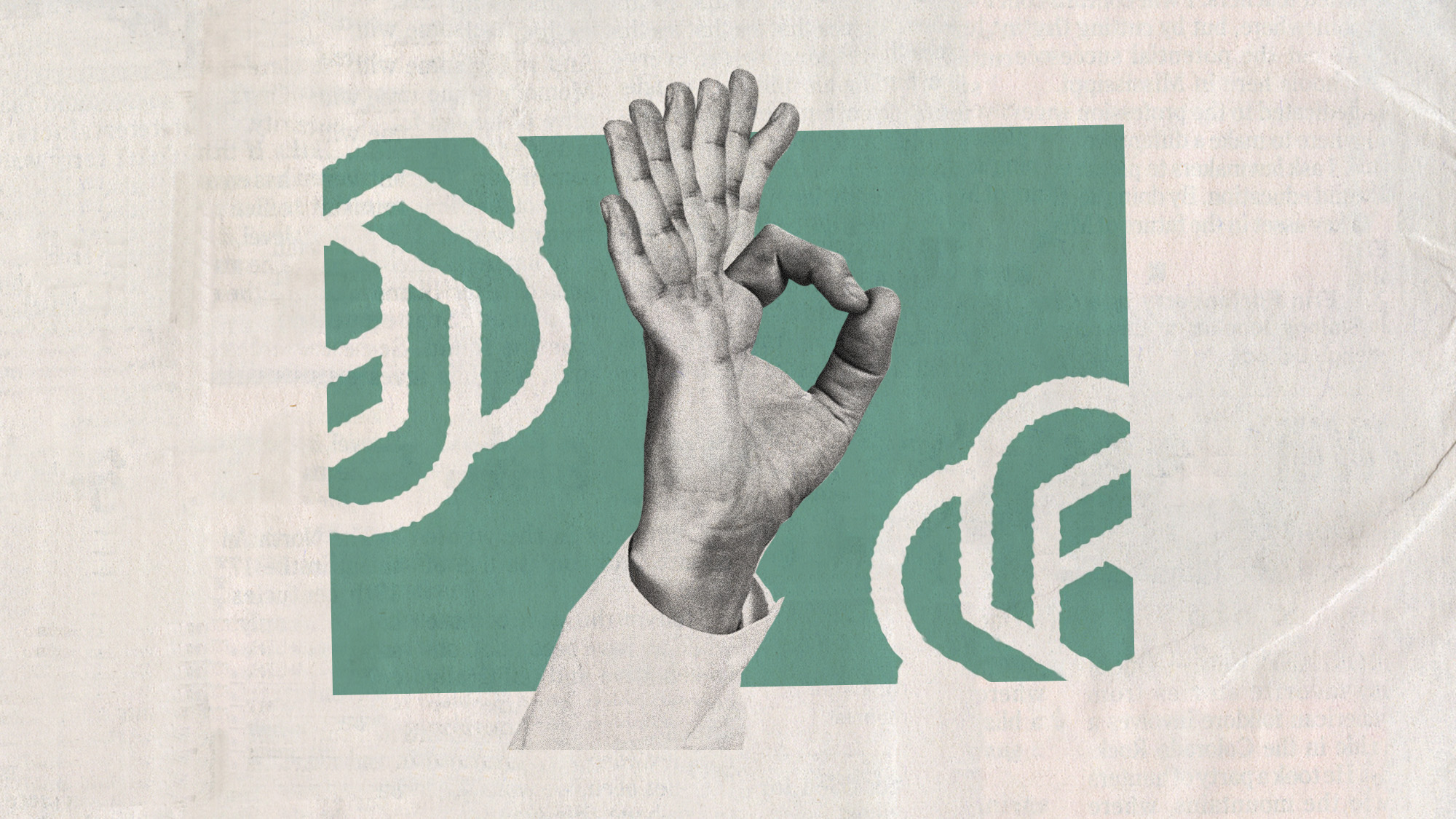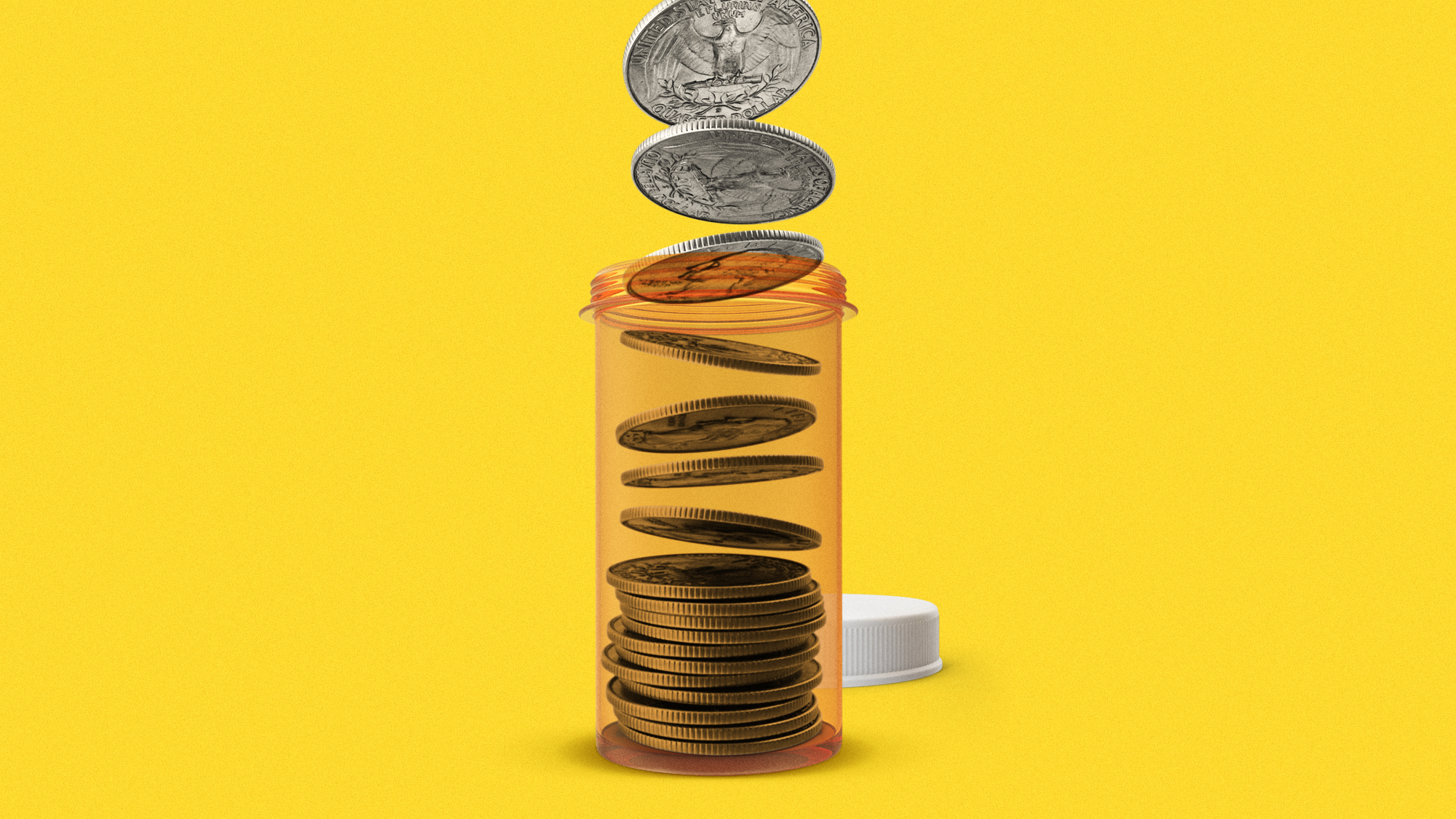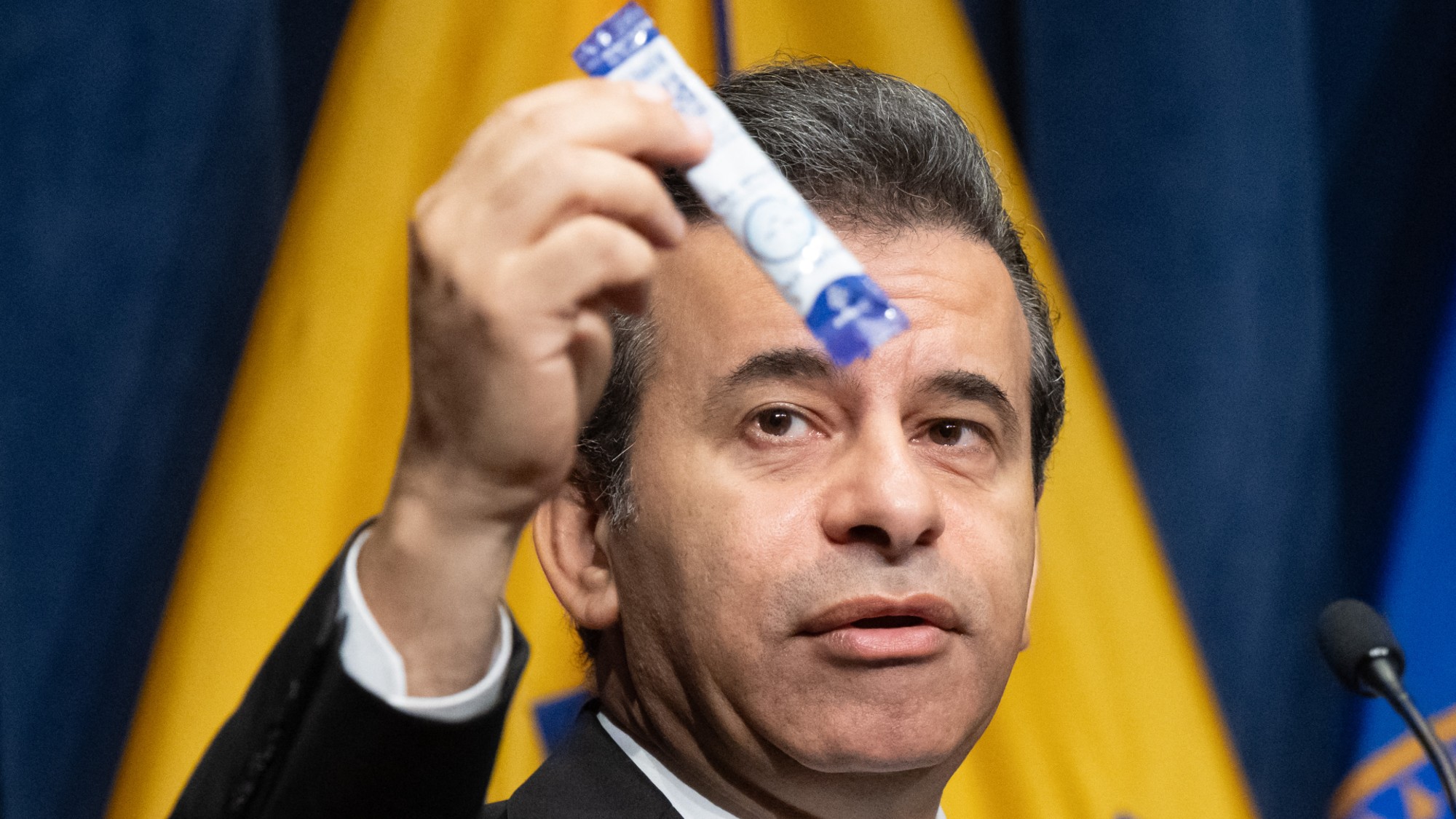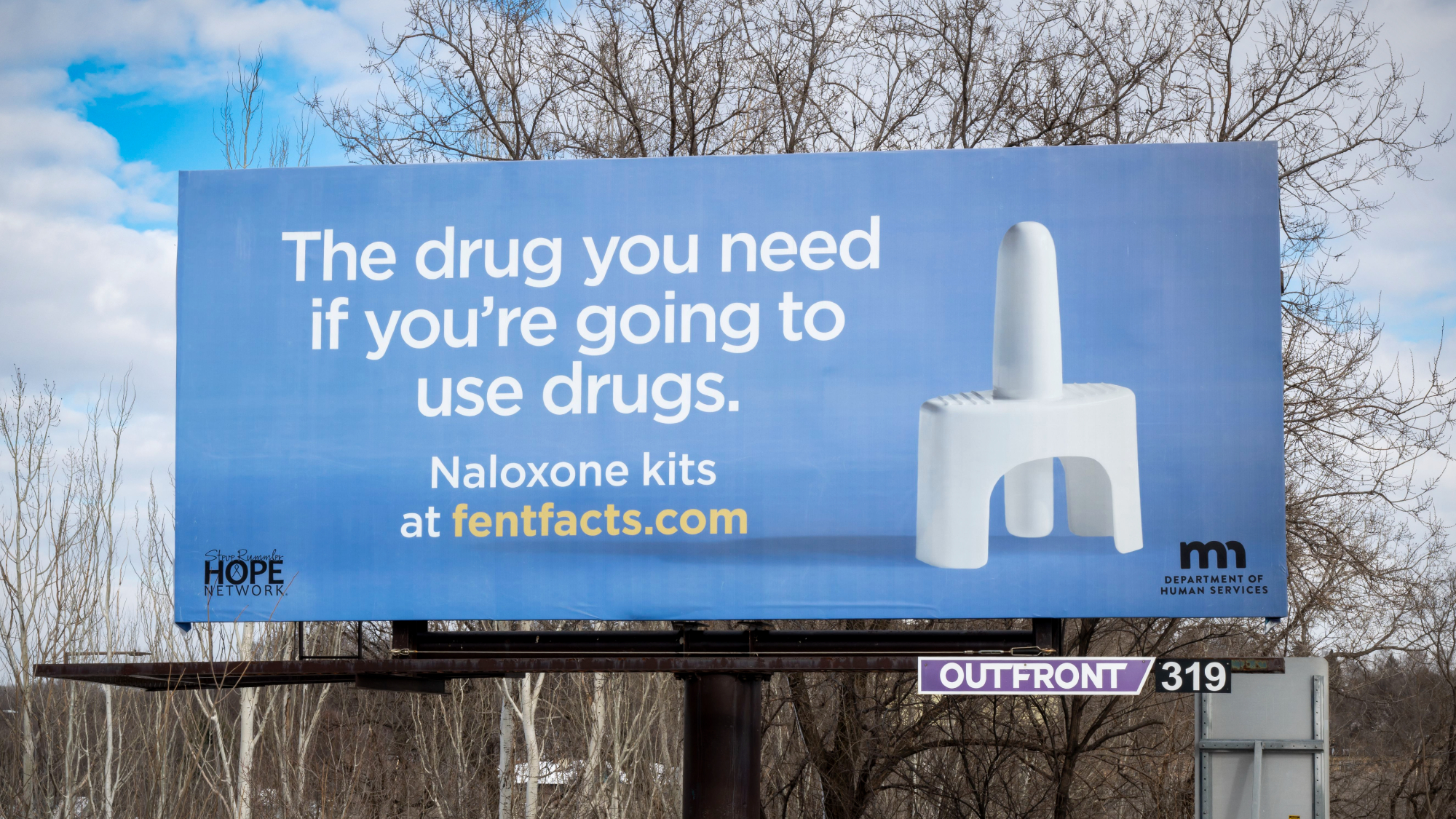The facts and fanciful fears about the 'rainbow fentanyl' Halloween freakout
Don't let a brightly colored talking point ruin your trick-or-treating


It is Halloween season once again, meaning new costumes, another glut of packaged candy, spooky decorations, and the annual tradition of parental panic over some scary new threat to young trick-or-treaters. This year, the anxiety-producing peril is "rainbow fentanyl," brightly colored pills, and other forms of the synthetic opiate behind a truly frightening number of overdose deaths.
"We're coming into Halloween and every mom in the country is worried, 'What if this gets into my kid's Halloween basket?'" Republican National Committee chairwoman Ronna McDaniel suggested on Fox News. Here are some facts, fears, and fanciful fictions surrounding rainbow fentanyl:
Is "rainbow fentanyl" a real thing?
Sure. "Rainbow fentanyl" is a name coined by the media — or perhaps an Oregon sheriff's department — but the "brightly colored fentanyl and fentanyl pills" are "addictive and potentially deadly," the Drug Enforcement Administration said in a late-August press release. And they are "made to look like candy" or sidewalk chalk.
The Week
Escape your echo chamber. Get the facts behind the news, plus analysis from multiple perspectives.

Sign up for The Week's Free Newsletters
From our morning news briefing to a weekly Good News Newsletter, get the best of The Week delivered directly to your inbox.
From our morning news briefing to a weekly Good News Newsletter, get the best of The Week delivered directly to your inbox.
"Rainbow fentanyl — fentanyl pills and powder that come in a variety of bright colors, shapes, and sizes — is a deliberate effort by drug traffickers to drive addiction amongst kids and young adults," DEA administrator Anne Milgram asserted.
"Disguising fentanyl as candy — and concealing it in children's toys — will never hide the fact that fentanyl is a deadly poison that harms our communities, our families, and our city," New York Police Commissioner Keechant Sewell was quoted as saying in a DEA alert about the discovery of rainbow fentanyl shaped like Lego bricks.
Is it a real threat to trick-or-treaters?
Almost certainly not. "Drug policy experts contacted by NPR agree there's no new fentanyl threat this Halloween," Brian Mann writes at NPR News. "Many are also skeptical of the DEA's original warning. They don't believe Mexican drug cartels and street dealers have launched any new campaign targeting children." And the DEA hasn't provided any evidence about cartels targeting children or explicitly tied the colorful but potentially deadly pills to Halloween.
"It looks like candy," Milgram told NBC News. "In fact, some of the drug traffickers have nicknamed it Sweet Tarts, Skittles." But when asked on Fox News if parents should be worried about rainbow fentanyl showing up in candy baskets, she acknowledged "we have not seen any connection to Halloween."
A free daily email with the biggest news stories of the day – and the best features from TheWeek.com
Of course not, "because Mexican drug cartels and street dealers would like to *make money,* and giving children free drugs that they will likely die from does not make anyone money," New York Times journalist Jane Coaston noted on Twitter.
"We need to keep in mind that these pills cost money so people aren't going to be throwing them on the ground for kids to find," Joseph Palamar, a New York University professor who studies illicit fentanyl, told CNN. "I don't think people will be giving these pills out as Halloween candy." The Daily Show's Trevor Noah made the same point, with jokes.
Why are the pills and bricks brightly colored, then?
Drug traffickers, like other retailers, use colors and other markers "to distinguish their product from other products on the street," Dr. Sheila Vakharia, head of research at the Drug Policy Alliance, tells NPR. And colored pills are pretty common for street drugs, adds Nabarun Dasgupta, who researches illegal drugs at the University of North Carolina. "We get them almost on a daily basis," he said. "We see pinks and purples, yellow, green, red, aqua, fuchsia. It's a pretty wide palette."
Along with catering to customer preferences, cartels and dealers sometimes disguise the drugs as toys or other bright and innocent-looking objects "to deter law enforcement attention," the DEA has acknowledged, not to hook kids.
Where does the rainbow fentanyl come from?
The DEA's Milgram said Mexican drug cartels "are responsible for the vast majority of the fentanyl that is being trafficked in the United States," including the varieties in rainbow colors. But that doesn't mean Mexican traffickers are bringing the fentanyl, multicolored or otherwise, across the border, Philip Bump writes at The Washington Post. The vast majority of fentanyl is manufactured in China, the DEA says, but most of the fentanyl seized by border agents — that is, taken before it can hit the streets — is discovered at Mexico border crossings, typically being smuggled by U.S. citizens.
Should adults be concerned about rainbow fentanyl?
Fentanyl — up to 50 times stronger than heroin, according to the Centers for Disease Control and Prevention — is a very real problem in the U.S. In 2021, according to the CDC, 107,622 Americans died of drug overdoses, and 66 percent of those deaths were related to synthetic opioids like fentanyl, the DEA says.
Fentanyl poisoning is one of the leading causes of death for Americans 18 to 45, and in many instances, the victims were unaware they were consuming fentanyl at all because it was mixed into a pill meant to resemble Adderall, Ritalin, or another prescription drug, or cut into heroin, cocaine, and meth. To the extent that rainbow fentanyl disguises the synthetic opiate as something else, that's bad news.
"Fentanyl overdoses are also unpredictable because of side reactions with other drugs," and it's important to remember "this is a dangerous drug and should be dealt with that way," Derek Lowe writes in the journal Science. "But over the years an entire mythology has grown up around the drug because of these dangers, and this has had some rather odd consequences," like people — including police officers — believing you can fatally overdose from any sort of skin contact with fentanyl.
That's not how fentanyl works, Lowe explains. "But this hysteria — which is what to call it — has spread to the point that random people are fainting when they think they've been exposed by (for example) picking up money off the floor."
What should parents actually be nervous about on Halloween?
"Although random candy poisonings are so far urban legends, many actual cases of corrupted confections involving pins, needles, or razor blades have been documented," Snopes reports. "As have cases of candy tainted with illegal substances (though it's unclear if the candy was intended for children or just being used as a cover)."
For the most part, though, tainted Halloween candy is "largely a myth," the Post reports. "The real threat to kids on Oct. 31 is much more mundane: traffic. Children are three times more likely to be struck and killed by a car on the holiday than any other day of the year" (though "in absolute terms, the likelihood of a child being killed by a car on Halloween is still extremely low," the Post adds).
"Again, there's no evidence of any heightened risk from fentanyl linked to Halloween," Mann writes at NPR. "The Food and Drug Administration does offer a list of safety tips every October," though, and along with suggesting kids eat only candy wrapped in untampered and unopened commercial packaging, they advise caution on bacterial taint from apple-bobbing, urge parents to "beware of spooky cider," avoid raw cookie dough, and beware of other scary pathogens. In other words, it's a peril-filled world, and you can worry too much about it. Happy Halloween.
Peter has worked as a news and culture writer and editor at The Week since the site's launch in 2008. He covers politics, world affairs, religion and cultural currents. His journalism career began as a copy editor at a financial newswire and has included editorial positions at The New York Times Magazine, Facts on File, and Oregon State University.
-
 Biggest political break-ups and make-ups of 2025
Biggest political break-ups and make-ups of 2025The Explainer From Trump and Musk to the UK and the EU, Christmas wouldn’t be Christmas without a round-up of the year’s relationship drama
-
 Why 2025 was a pivotal year for AI
Why 2025 was a pivotal year for AITalking Point The ‘hype’ and ‘hopes’ around artificial intelligence are ‘like nothing the world has seen before’
-
 The best drama TV series of 2025
The best drama TV series of 2025the week recommends From the horrors of death to the hive-mind apocalypse, TV is far from out of great ideas
-
 A fentanyl vaccine may be on the horizon
A fentanyl vaccine may be on the horizonUnder the radar Taking a serious jab at the opioid epidemic
-
 Nitazene is quietly increasing opioid deaths
Nitazene is quietly increasing opioid deathsThe explainer The drug is usually consumed accidentally
-
 Can TrumpRx really lower drug prices?
Can TrumpRx really lower drug prices?Today’s Big Question Pfizer’s deal with Trump sent drugmaker stocks higher
-
 The UK’s opioid crisis: why the stats don’t add up
The UK’s opioid crisis: why the stats don’t add upThe Explainer A new report has revealed that the UK’s total of opioid-related deaths could be much greater than official figures show
-
 Why the FDA wants to restrict kratom-related products
Why the FDA wants to restrict kratom-related productsIn the Spotlight The compound is currently sold across the United States
-
 US overdose deaths plunged 27% last year
US overdose deaths plunged 27% last yearspeed read Drug overdose still 'remains the leading cause of death for Americans aged 18-44,' said the CDC
-
 Trump seeks to cut drug prices via executive order
Trump seeks to cut drug prices via executive orderspeed read The president's order tells pharmaceutical companies to lower prescription drug prices, but it will likely be thrown out by the courts
-
 FDA approves painkiller said to thwart addiction
FDA approves painkiller said to thwart addictionSpeed Read Suzetrigine, being sold as Journavx, is the first new pharmaceutical pain treatment approved by the FDA in 20 years
